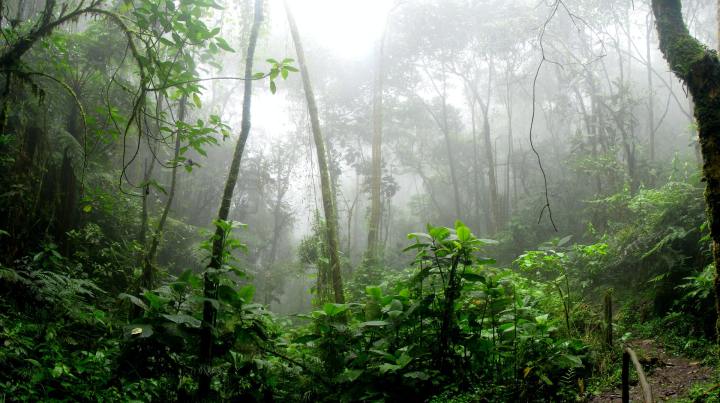
One million plant and animal species are at risk of extinction, and the world’s efforts to curb the loss in biodiversity aren’t going far enough to protect them, according to a new report from the United Nations Convention on Biological Diversity. “Biodiversity is declining at an unprecedented rate, and the pressures driving this decline are intensifying,” Elizabeth Maruma Mrema, executive secretary of the Convention on Biological Diversity, told reporters during a press conference on Tuesday.
An abundant and varied population of insects, birds, mammals, microbes, and vegetation is essential not just for maintaining ecosystems but for everything from decomposition to pollination to medication to agriculture. For all these reasons, species loss threatens human survival. In 2010, the CBD outlined 20 global biodiversity goals, the Aichi Targets, that were supposed to be met by 2020. Every country in the UN, except the U.S., signed on to help achieve the targets. None of them have been met, according to the Global Biodiversity Outlook 5 report, though six have been partially successful. While that’s worrisome, the report’s authors found reason for optimism during the press conference: “It is not too late to act,” ecologist Anne Larigauderie said. “In fact, the GBO 5 provides many encouraging examples of where, when measures have been taken, they have led to successes and biodiversity does bounce back.”
Missed and mixed marks
Some of the progress highlighted by the report include the rate of deforestation, which has fallen by about a third in the last decade. Some results were more mixed. Target 19 was to improve the knowledge and technology related to biodiversity. While there were improvements in sharing and generating data and advances in modeling, yet “major imbalances remain in the location and taxonomic focus of studies and monitoring” and “the application of biodiversity knowledge in decision making is limited,” so the target was only partially met.
Target 3 was aimed at eliminating or revamping subsidies that are harmful to biodiversity, such as those that lead to overfishing. Few countries have even pinpointed which of their subsidies contribute to biodiversity loss let alone started phasing them out, according to the report.

There was a sense of urgency in the report, particularly because its authors did find that when measures were put in place, like catch limits at fisheries, the positive impacts were clear. “You can bring species back that are nearly on the brink by good conservation measures, but once they’re gone, they’re obviously gone forever,” said Inger Andersen, executive director of the UN’s environmental program.
The CBD’s 20 targets were sweeping and ambitious, but Larigauderie said “that if we have failed to achieve all of the objectives, it’s really first and foremost because of a lack of political will.” Many countries have been focused on growing economies and feeding their populations, without necessarily taking into account sustainable ways of doing so. The report recommends eight major transitions to protect biodiversity, including redesigning the agriculture system, shifting to mostly plant-based diets, and speeding up the phasing out of fossil fuels. There’s an emphasis on not only protecting existing ecosystems but reestablishing lost ones. The report calls for “transformative change,” a drastic redesign of economies and policies.
What can you do?
In 2021, world leaders will create a new set of biodiversity targets for the next decade. “Ensuring universality and ensuring all stakeholders are involved and engaged in the development of the post-2020 framework is, again, a part of the lessons being carried forward,” Maruma Mrema said. While the earlier targets relied mainly on governments implementing changes, the new ones will involve more input and actions from indigenous groups, youth-led movements, and other vulnerable populations, she said.
Instead of waiting for the fashion industry to make better, more sustainable choices, for example, individuals can be more mindful not only of what they buy but how often they do it. “I think we need, also, to play a role, even as individuals, in terms of putting pressure on the production system,” she said, which can then influence market trends.
Of course, individuals can only have so much impact without follow-through from the government and industry. Andersen says the scientific community needs to collaborate with businesses to create sustainability targets. That way, products could have clear labels so people know the biodiversity impact of say, a new computer or jacket. “Now, wouldn’t that be the day?” she said. “That’s where we need to arrive to.”
The authors of the report frequently mentioned COVID-19, as the biodiversity crisis will only increase the chances of more pandemics. Reopening the economy gives the world the chance to do so in a more sustainable way, said Andersen, and “how we prioritize and direct our resources will either secure human, economic, and environmental health for generations to come or take us down the grave path that has brought us — brought with it the suffering that we are seeing today. Ladies and gentlemen, we have little choice but to take the right path, and I trust that we will do so.”


